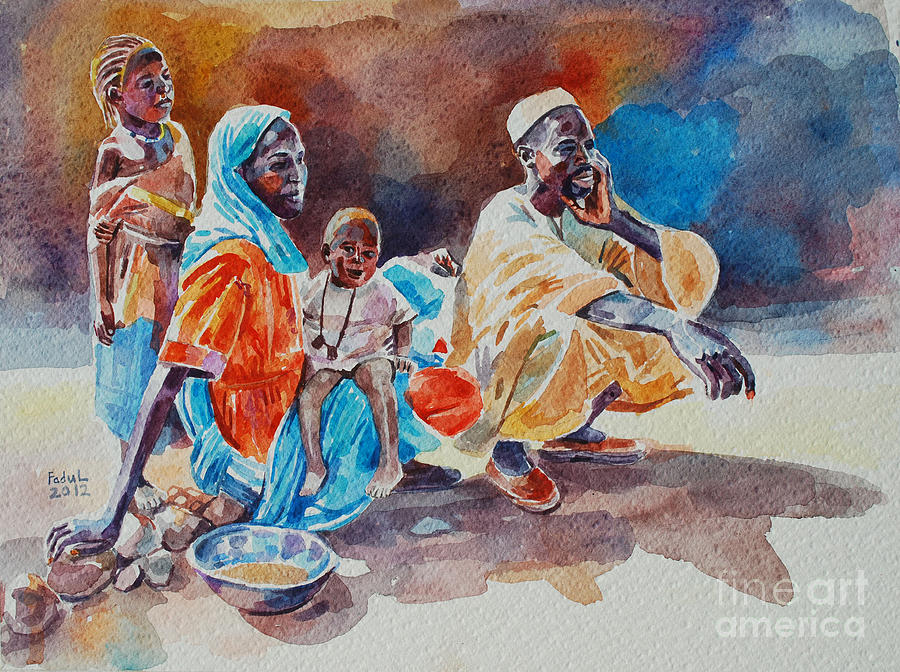Tribal life dominated the early art of Sudan, from tools and other
practical matters to items used for religious/spiritual purposes. And even
today, their past cultural lifestyles creep into their artistic styles and
subject matter.
Whenever I hear about terracotta sculptures, my first thought is the soldier statues found in China, but the Djenne tribe also created sculptures from terracotta as well. These sculptures typically have a sense of calming and serenity about them. Probably the most well known of these terracotta figures is a person riding a horse, which is seen as a symbol of power.
They certainly had their preferred forms of handicrafts. One of the more common arts is jewelry and beadwork. Beadwork is not only used as part of decorating clothing and other similar textile applications, but they also had trading beads that were made from colored glass. Other types of arts such as textile arts (many people utilize brightly colored cloth as part of their wraps, clothing, and accessories), metalwork, and leatherwork are commonly created here.
After the Turks invaded Sudan during the early part of the 1800s, one of their motives was to modernize the Nile Valley. And a big push toward education was one of the results. However, art education really didn't pick up until the early part of the 20th century. As students traveled to the cultural centers of Europe to study art, they realized they could merge the old traditions with the new. Many of these artists returned to Khartoum where they took what they learned and applied it to representing their unity and celebrating their diversity.
 |
| by Mohamed Fadul -- his paintings are stunning! |
During the 16th and 17th centuries, a change began to take place in their literary styles, and the foundations for modern Sudanese literature solidified. First of all, it was mainly written in Arabic, yet certain poetic traditions were still written in the local language. (i.e. Fur-language poetry). 20th century scholars began the painstaking task of writing down many of these oral folkloric stories, traveling around and gathering these stories to write down.
 |
| University of Khartoum library |
 |
| Al-Tayyib Salih |
 |
| Ibrahim 'Ali Salman |
Up next: music and dance
.jpg)



No comments:
Post a Comment